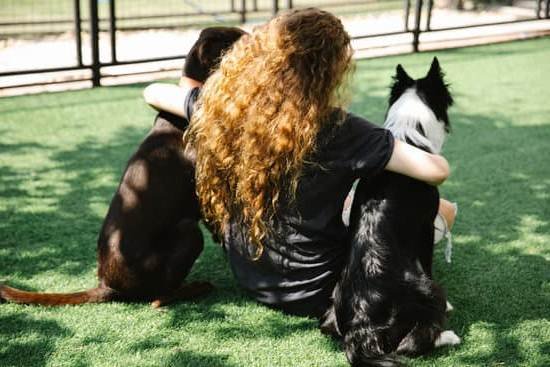Training your dog can be both a challenging and rewarding experience. There are various methods and techniques available, each with their own advantages and disadvantages. One method that has garnered significant controversy is the use of remote shock collars in dog training. These collars provide an electronic stimulus through a vibrating or static shock to help reinforce commands or discourage certain behaviors.
However, the use of remote shock collars has sparked heated debates among dog trainers, veterinarians, and animal welfare organizations. Advocates argue that when used correctly, these collars can be effective tools for training dogs. They believe that the immediate feedback provided by the collar helps teach dogs to associate their actions with consequences, leading to quicker learning and better obedience.
On the other hand, opponents argue that remote shock collars are cruel and unnecessary. They believe that such devices can cause physical and psychological harm to dogs, potentially damaging their trust in humans and resulting in fear or aggression. This controversy surrounding remote shock collars highlights the importance of understanding both sides of the argument before deciding if this training method is right for you and your dog.
In this article, we will explore various aspects of training your dog with a remote shock collar. We will discuss the functionality and components of these collars, as well as step-by-step guidance on choosing the right one for your dog. Additionally, we will cover how to prepare your dog for training using a remote shock collar by building trust and establishing boundaries.
It is crucial to approach this topic with an open mind and carefully consider all viewpoints so you can make an informed decision about whether remote shock collar training is suitable for your furry friend. Stay tuned as we delve into different training techniques, safety guidelines, troubleshooting common challenges, and even alternative approaches using positive reinforcement methods.
The Importance of Proper Training Techniques for Your Dog
Proper training techniques for your dog are essential for their well-being and the well-being of those around them. When it comes to training, it is important to have a clear understanding of what methods are effective and humane. This section will discuss the importance of proper training techniques for your dog and why it is crucial to choose the right approach.
Training your dog using positive reinforcement techniques is widely regarded as one of the most effective and humane methods. Positive reinforcement involves rewarding your dog when they exhibit desired behaviors. This can include treats, praise, or playtime. By using this approach, you create an environment where your dog associates good behavior with positive outcomes.
On the other hand, improper training techniques such as punishment-based or aversive methods can be harmful to your dog’s physical and mental well-being. These methods may include yelling, physical corrections, or the use of tools such as shock collars. While some may argue that these methods can yield quick results, they can also result in fear, anxiety, and aggression in dogs.
It’s important to note that every dog is unique and will respond differently to various training techniques. What works for one dog may not work for another. Before deciding on a training method, it is crucial to consider your dog’s temperament, breed characteristics, and individual needs. Taking the time to understand your dog and choosing an approach that aligns with their personality will set you both up for success in achieving desired behaviors.
| Training Technique | Advantages | Disadvantages |
|---|---|---|
| Positive Reinforcement | – Builds trust between you and your dog
| – Requires consistency and patience
|
| Punishment-based or Aversive Methods | – May yield quick results in certain situations | – Can lead to fear, anxiety, and aggression
|
Explaining the Functionality and Components of Remote Shock Collars
Remote shock collars are electronic training devices that are commonly used to train dogs. They consist of a collar that is worn around the dog’s neck and a handheld remote control that allows the owner or trainer to deliver a shock or vibration to the dog when necessary.
The functionality of remote shock collars relies on two main components: the collar receiver and the remote control transmitter. The collar receiver contains the electronic circuitry that generates the static correction, while the remote control transmitter sends a signal to activate the correction. These components are usually connected via radio frequency, allowing for effective communication between the two devices.
The collar receiver is equipped with metal contact points that come in contact with the dog’s skin when it wears the collar. When a correction is delivered through these contact points, it creates an uncomfortable or startling sensation for the animal. The intensity of this sensation can usually be adjusted according to the dog’s size, temperament, and training needs.
It is important to note that modern remote shock collars often feature various additional functions and settings beyond just delivering shocks. Some collars have multiple levels of static correction, as well as options for vibrating or emitting audible tones instead of shocks. These alternative modes can be useful for dogs that may not respond well to shocks or for owners who prefer more gentle training methods.
Overall, understanding how remote shock collars function and their key components is essential before starting their use in training your dog. Familiarizing yourself with these aspects will help you make informed decisions when choosing a collar and using it effectively during training sessions.
| Component | Description |
|---|---|
| Collar Receiver | Contains electronic circuitry for generating static corrections |
| Contact Points | Metal points on the receiver that come in contact with the dog’s skin |
| Remote Control Transmitter | Sends signals to activate corrections and adjust training settings |
| Radio Frequency | Enables communication between the collar receiver and remote control transmitter |
| Additional Functions | Can include multiple levels of correction, vibrating and audible tone options |
Step-by-Step Guide
When it comes to choosing the right remote shock collar for your dog, there are several factors to consider. Here is a step-by-step guide to help you make an informed decision:
- Evaluate Your Dog’s Size and Breed: Remote shock collars come in different sizes and strengths, so it’s important to choose one that is appropriate for your dog’s size and breed. Larger dogs may require a collar with a higher level of stimulation, while smaller dogs may do well with a gentler option.
- Consider Your Training Goals: Think about what specific training goals you have for your dog. Are you looking to address behavior issues such as excessive barking or jumping? Or do you want to work on obedience commands? Different collars offer various features that can cater to different training needs, so be sure to choose one that aligns with your goals.
- Research Different Brands and Models: Take the time to research different brands and models of remote shock collars. Read customer reviews and look for collars that have a good reputation for durability and effectiveness. It’s also worth considering collars that offer additional features such as vibration or tone modes, which can provide alternative methods of communication with your dog.
- Seek Professional Advice or Training Recommendations: If you’re unsure about which remote shock collar would be best for your dog, don’t hesitate to seek professional advice or recommendations from experienced trainers or veterinarians. They can help assess your dog’s specific needs and steer you towards the most suitable collar option.
- Ensure Proper Fit and Adjustability: Once you have chosen a remote shock collar, it’s crucial to ensure proper fit and adjustability. The collar should fit comfortably around your dog’s neck without being too tight or too loose. It should also have adjustable settings for intensity levels, allowing you to customize the level of stimulation based on your dog’s response.
Remember, using a remote shock collar should always be done with caution and under the guidance of a professional trainer. It is essential to familiarize yourself with the manufacturer’s instructions and guidelines for safe and effective use. Choosing the right collar for your dog is just the first step in remote shock collar training; the next section will cover how to prepare your dog for this type of training by building trust and establishing boundaries.
Preparing Your Dog for Remote Shock Collar Training
Before embarking on remote shock collar training, it is crucial to prepare your dog for this type of training method. Building trust and establishing boundaries will lay the foundation for a successful training experience. Here are some important steps to follow when preparing your dog:
- Introduce the collar slowly: It is important to introduce the remote shock collar gradually to avoid overwhelming your dog. Start by allowing your dog to sniff and become familiar with the collar before putting it on their neck. Once they seem comfortable with it, you can proceed to put it on them.
- Positive association: Help your dog associate the shock collar with positive experiences by offering treats or rewards whenever you put it on them or adjust its settings. This will help create a positive association in their minds and reduce any anxiety or apprehension they may have about wearing the collar.
- Consistent communication: Before starting any training, establish clear communication cues with your dog. This could be as simple as a particular word or gesture that indicates when they should pay attention or follow a command. Consistency in these cues will help your dog understand what is expected of them during training sessions.
- Set clear boundaries: Dogs thrive when they know their boundaries, so it is essential to establish these before starting remote shock collar training. Decide which areas of the house are off-limits or where they are allowed to roam freely, and consistently reinforce these boundaries through verbal commands and physical barriers if necessary.
- Gradual exposure: Ease your dog into remote shock collar training by using low-level stimulation initially and gradually increasing it as they become more accustomed to the sensation. This gradual exposure will minimize any discomfort or fear your dog may experience during the training process.
By taking these steps to prepare your dog for remote shock collar training, you can ensure that they are comfortable, trusting, and ready for the training sessions ahead. Building a strong foundation of trust and establishing clear boundaries will set the stage for effective training outcomes and a positive experience overall.
Training Your Dog with a Remote Shock Collar
Introduction to Remote Shock Collar Training
Remote shock collar training can be an effective way to teach your dog basic commands and behaviors. However, it is important to approach this method with caution and use it responsibly. Before diving into the specific commands and techniques, it is crucial to understand the underlying principles of remote shock collar training.
Understanding Communication with the Remote Shock Collar
When using a remote shock collar, the key is clear communication between you and your dog. The sensation they feel from the collar serves as a form of negative reinforcement, helping them associate certain behaviors with discomfort. However, this does not mean using the highest intensity level or using the shocks excessively. In fact, excessive or improper use of a remote shock collar can lead to negative outcomes, such as fear or aggression in your dog.
To ensure effective communication during remote shock collar training, start by familiarizing yourself with the different levels of intensity on the device. Typically, there are multiple levels ranging from low to high. Start at the lowest setting and gradually increase if necessary. It is essential to only apply enough pressure for your dog to take notice and respond appropriately.
Teaching Basic Commands Using Remote Shock Collar Training
Remote shock collars can be used to teach various basic commands and behaviors including sit, stay, come, and heel. Here are some techniques you can employ:
- Sit Command: Begin by giving a verbal command such as “sit” while gently guiding your dog into a sitting position using a leash if needed. If they do not comply within a few seconds, use the remote control to deliver a low-level zap as a correction.
- Stay Command: Once your dog has mastered sitting on command, introduce the “stay” command along with hand signals. Gradually increase distractions while commanding them to stay in their position. Use appropriate corrections when necessary.
- Come Command: To teach your dog to come when called, start by saying their name followed by the “come” command. If they do not respond promptly, use the remote control to provide a mild correction. Praise them immediately when they come to you.
- Heel Command: Begin teaching your dog to walk calmly on a leash using the “heel” command. Use the remote shock collar as a correction tool if they start pulling or straying from your side.
Remember that consistency and positive reinforcement should go hand in hand with remote shock collar training. Praise and reward your dog for correct responses, and always end each session on a positive note. Building a strong foundation through basic commands will greatly benefit both you and your dog in the long run.
Safety Guidelines and Best Practices
When using a remote shock collar for training your dog, it is crucial to prioritize their well-being and ensure their safety throughout the process. Safety guidelines and best practices should always be followed to prevent any potential harm or discomfort to your furry friend.
First and foremost, it is essential to choose a high-quality remote shock collar that is specifically designed for training purposes. Look for collars that offer adjustable intensity levels, as this will allow you to find the appropriate level of stimulation for your dog’s needs. Additionally, make sure that the collar fits properly and comfortably on your dog’s neck to avoid any chafing or irritation.
Before starting remote shock collar training, familiarize yourself with the various settings and functions of the collar. Understand how the different modes work, such as vibration or sound options, so that you can choose the most appropriate one for each training scenario. This will help you tailor the training experience to suit your dog’s individual temperament and sensitivity.
It is highly recommended to consult with a professional dog trainer or behaviorist before implementing remote shock collar training. They can provide guidance on proper techniques and help you develop a training plan specifically tailored to your dog’s needs. They can also teach you how to correctly use the remote shock collar without causing unnecessary pain or distress.
During remote shock collar training sessions, always monitor your dog closely for any signs of discomfort, anxiety, or distress. Be attentive to their body language, such as tense muscles, lowered tail, flattened ears, or avoidance behaviors. If you notice any signs of distress, immediately stop using the shock function and reassess your approach. It may be necessary to adjust the intensity level or consider alternative training methods.
By following these safety guidelines and best practices, you can ensure that your dog remains safe and comfortable during remote shock collar training. Remember that building trust and maintaining a positive relationship with your canine companion should always be at the forefront of any training approach.
Troubleshooting Common Challenges During Remote Shock Collar Training
Introduction
Remote shock collars are a popular choice for dog owners who want to train their pets effectively. While they can be highly useful tools, it’s important to understand that training with a remote shock collar may come with its share of challenges. This section will focus on some common issues that dog owners may encounter during remote shock collar training and provide troubleshooting tips to overcome them.
Difficulty in Understanding the Signal
One of the common challenges faced by dog owners using remote shock collars is the difficulty in understanding the signal intensity needed for effective training. Every dog is unique, and what works for one might not work for another. It’s crucial to find the right balance between a signal that gets your dog’s attention without causing unnecessary distress.
To troubleshoot this issue, start with the lowest level of stimulation and assess your dog’s response. Gradually increase the intensity until you notice a change in behavior or compliance from your dog. Keep in mind that each time you increase the intensity, monitor your pet closely for any signs of discomfort or anxiety such as whimpering or avoidance behavior. If you’re unsure, consult a professional trainer who can guide you through this process.
Inconsistent Training Results
Another common challenge faced during remote shock collar training is inconsistency in results. Sometimes dogs respond well to commands and signals, while other times they seem unaffected or even resistant. Inconsistency can arise due to various factors such as distractions, inadequate timing, or lack of clarity in commands.
To troubleshoot this challenge, ensure that you eliminate distractions as much as possible during training sessions. Find a quiet space where your dog can focus solely on you and the training process. Additionally, work on improving your timing when delivering commands and signals – be clear, concise, and give them at appropriate moments when your dog is paying attention.
Keep practicing consistently and reinforce positive behaviors with rewards to create a strong association between the collar’s signal and desired behaviors. Persistence and patience are key to overcoming this challenge and achieving consistent results with remote shock collar training.
By troubleshooting these common challenges, you can optimize your dog’s remote shock collar training experience and ensure effective communication between you and your furry friend. Remember that every dog is unique and may respond differently to training techniques, so it’s crucial to adapt the approach based on their individual needs.
Alternatives to Remote Shock Collars
One alternative to using remote shock collars for dog training is the approach of positive reinforcement. Positive reinforcement relies on rewarding desired behaviors rather than punishing undesired ones. This method focuses on building a strong bond between the owner and the dog, emphasizing trust, respect, and communication.
Positive reinforcement involves rewarding your dog with treats, toys, or praise when they exhibit the behavior you want them to learn. For example, if you are teaching your dog to sit, you can give them a treat immediately after they successfully sit on command. This reinforces the idea that sitting leads to something good happening.
Another positive reinforcement technique is clicker training. This involves using a small device called a clicker that makes a distinct clicking sound when pressed. The clicker is used to mark the specific moment when your dog performs the desired behavior, and is then followed by a reward. Over time, your dog will associate the sound of the clicker with receiving a reward and will understand that certain behaviors result in positive outcomes.
There are several advantages to using positive reinforcement techniques instead of remote shock collars. Firstly, positive reinforcement builds a stronger bond between you and your dog based on trust and mutual respect. It also promotes better communication between you and your pet as they learn to understand what behaviors are rewarded. Additionally, positive reinforcement methods have been shown to be more effective in creating lasting behavior changes compared to punishment-based techniques.
Conclusion
In conclusion, training your dog with a remote shock collar can be a controversial topic, but it is important to understand the importance of finding a balance between effective training and your dog’s well-being. Remote shock collars can be an effective tool when used properly and responsibly, but it is crucial to prioritize the safety and emotional well-being of your dog throughout the training process.
When choosing a remote shock collar for your dog, take the time to carefully research and select one that is appropriate for their size, breed, and temperament. It is also essential to prepare your dog for remote shock collar training by building trust and establishing boundaries beforehand. This includes developing a strong foundation of basic commands using positive reinforcement techniques to ensure that you are starting on the right foot.
During the training process, always prioritize safety guidelines and best practices. Start with low levels of stimulation and gradually increase as needed, always monitoring your dog’s response closely. Regularly check the fit of the collar to ensure it is not causing any discomfort or pain. Additionally, remember that the use of remote shock collars should never replace positive reinforcement methods such as treats, praise, and rewards.
While remote shock collars can be an effective training tool for some dogs, it is also worth exploring alternative approaches such as positive reinforcement techniques. These methods focus on rewarding good behavior rather than punishing undesirable behavior. By utilizing these positive reinforcement approaches in conjunction with remote shock collar training, you can create a more balanced training routine that prioritizes both effectiveness and your dog’s emotional well-being.
Frequently Asked Questions
How do you train with a remote training collar?
Training with a remote training collar involves understanding and using the correct techniques to effectively communicate with your dog. First, it is crucial to introduce your dog to the collar gradually and associate it with positive experiences through treats or rewards. This helps create a positive association with the collar.
Next, use the remote control feature to deliver a quick and mild stimulation when your dog engages in undesirable behavior or fails to follow commands. It is critical to administer the stimulus only at the right moment so that your dog can clearly understand what behavior is being corrected. Consistency is key, as repetitive training sessions will help reinforce proper behaviors and discourage unwanted ones.
How should I train my dog with a shock collar?
When training your dog with a shock collar, it is important to prioritize their well-being, safety, and comfort throughout the process. Begin by properly fitting the collar on your dog so it’s snug but not too tight to avoid discomfort or injury. Familiarize yourself with the different settings and levels of stimulation offered by the shock collar, ensuring you start at the lowest level possible for effective communication.
Focus on teaching basic commands and reinforcing positive behaviors using verbal and visual cues simultaneously with appropriate corrections provided through the remote control when necessary. Patience and consistency are vital during this process as you gradually decrease reliance on the shock collar and transition towards other training methods.
Do remote dog training collars work?
Remote dog training collars can be effective tools when used properly, but success depends on various factors such as proper usage, individual dogs’ temperaments, training techniques employed, consistency, and reinforcement from owners. When used correctly, these collars can provide clear feedback to dogs about their actions in specific situations or environments where verbal cues may not be enough due to distractions or distance.
However, it is important to remember that these devices should never be seen as a replacement for positive reinforcement training methods or building a strong bond based on trust between dogs and their owners. These collars should always be used responsibly following guidance from professional trainers or behaviorists, ensuring the well-being and comfort of your dog remain at the forefront.

Welcome to the blog! I am a professional dog trainer and have been working with dogs for many years. In this blog, I will be discussing various topics related to dog training, including tips, tricks, and advice. I hope you find this information helpful and informative. Thanks for reading!





